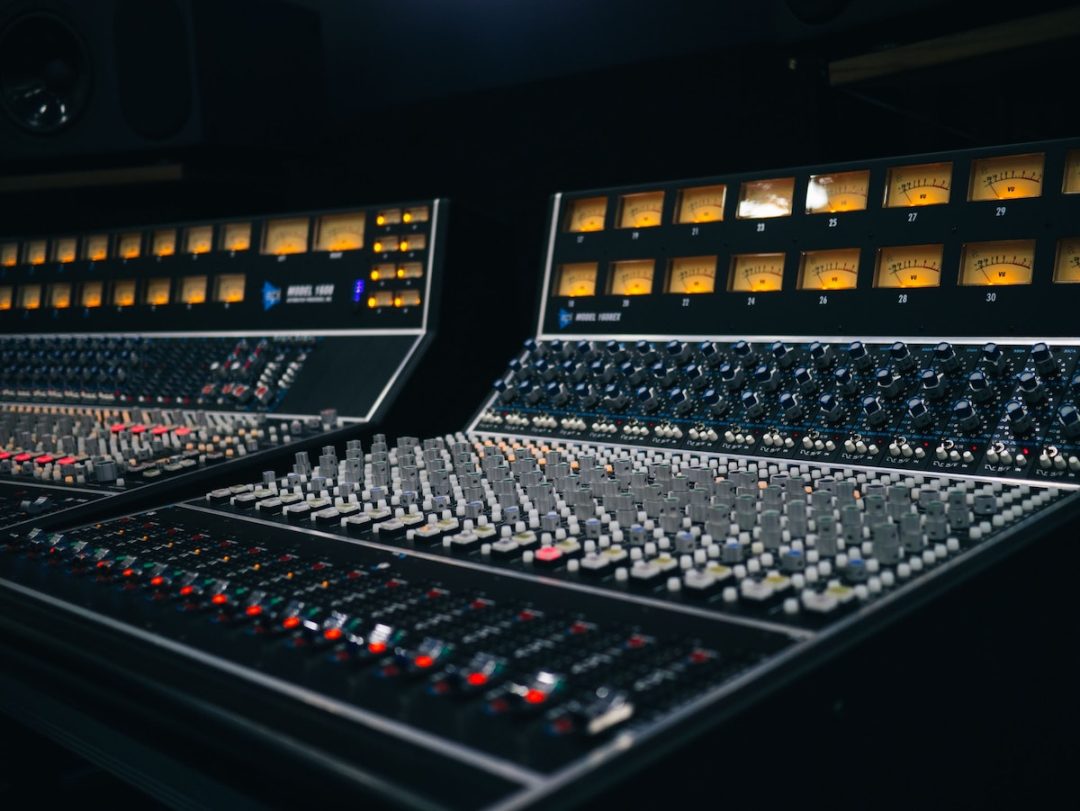One of the first things we learn about a recording system is the variety of audio signals that connect to it. It’s a concept that can initially be tough to grasp, but once you learn it you never forget it. You’ll most commonly hear people talk about the difference between line level and mic level, which we’ll explain in addition to other frequently-used signals.
What Is an Audio Signal?
We measure audio signals in voltage that we input into mixers, interfaces, and amps, and output to our speakers. Understanding the various levels and hooking our equipment up correctly is one of the most fundamental aspects of studio set-up.
We’ll mention some technical terms about the various signals, like their approximate voltage and how that’s measured in dBV/dBu. These are simply number values that are easy to understand even without knowing the complex details behind them.
For our purposes, the goal is to have a good understanding of the primary differences between line level, mic level, instrument level, and speaker level.
The 4 Different Types of Audio Signals
Line Level
Line level is the loudest signal we handle in audio. In terms of voltage, it comes in at approximately 1 volt, or 0 dBV. Line level usually flows through the system after the preamp stage and before the output to our speakers.
Line level directly correlates to mic level. We have to boost mic level up to line level for recording and playback. Another important note:
- -10dBV is the standard for consumer products like CD players
- +4dBu is the standard for professional equipment like preamps, mixers, and outboard gear. Fun fact, +4 dBu corresponds to 0 on a VU meter.
Mic Level
Mic level is significantly quieter. It usually lives somewhere between 1 and 10 millivolts, or -60 to -40 dBV. As the name implies, mic level is what we get from a microphone connected to our system via XLR. It requires amplification to boost it up to line level.
Depending on the mic, it may have a hotter or colder output level. You could also say that certain mics are more “sensitive” than others and require less preamp gain to reach a healthy level. Many higher output microphones have pads to avoid clipping them on louder sound sources.
Instrument Level
Instrument level is the approximate middle between mic and line level. These are signals that come out of an instrument like an electric guitar or bass. Some interfaces have dedicated “Hi-Z,” or high impedance, 1/4″ inputs specially for connecting instruments. Others utilize hybrid XLR/1/4″ inputs and let you select whether a microphone or an instrument is plugged in.
Instrument levels require a bit of preamp gain to reach line level.
Speaker Level
Finally, we come to speaker level. This is the point at which all our signals are boosted to line level and ready to output to our speakers—in other words, speaker level is post-amplification of our low level signals. The voltage is pretty high, so you’ll need to use dedicated speaker cables so the signal flows safely out of your interface and into your speakers.
What Does It Mean for Levels to Be “Mismatched”?
A mismatch occurs when you connect a mic level source to a line level input or vice versa. Different inputs are designed to anticipate the approximate incoming signal level; a line level input is expecting a very hot signal, so sending it a quiet mic level signal results in pretty much no sound. And if you try to crank the gain, you’ll get a bunch of noise.
You also shouldn’t use a mic input as a line input. Mic inputs expect a very quiet signal, so a loud incoming line level will overload the input and distort.
Why Your Line Level Matters
Line level is super important! All of the connections in our recording system are amplified to line level before outputting to our speakers. Just make sure you make the appropriate connections (e.g., microphone to mic input, not line, and vice versa) and adjust the gain accordingly. If you understand basics outlined here, you shouldn’t have many worries.
Want to streamline your home recording workflow? Check out The Creator’s Guide to Recording and Mixing!
